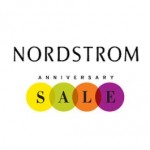 Like other patriotic Americans, I spent some time over Labor Day weekend shopping. Just doing my bit.
Like other patriotic Americans, I spent some time over Labor Day weekend shopping. Just doing my bit.
The retail world is in perpetual transition, but I thought I could always count on a few eternal verities, namely:
• Bloomingdales has overpriced brands but great sales
• Lord & Taylor has the best dress department
• Nordstrom has wonderful service but infrequent sales
• You’re a chump if you pay full price at Macy’s
Nordstrom is often held up as an exceptional brand. Its strength in customer service is legendary. A discounter, however, it is not. No coupons to clip in the newspaper, no One Day Sale! (every other week), no All Day Shopping Passes. Service comes at a price, after all.
Their sales are few and far between, but when they have one, it means something. The dates of their Half-Yearly Sale are penciled into calendars all over the country. Their Anniversary Sale in July gives you a reason to buy fall clothes early, because you won’t see discounts like that till deep into the fall.
Or so they’ve always said.
Encouraged by sales associates to catch the Anniversary Sale in July, I bought an expensive blouse at a decent discount. It was something I could wear soon and mostly year-round, so I didn’t want to wait 3 months till the price dropped.
Imagine my surprise walking into Nordstrom a few weeks later and seeing that same “fall fashion” deeply discounted—well below the price I’d just paid at the Anniversary Sale.
Brand betrayal
I felt like a chump. That is not how I want to feel. Nor is it how Nordstrom wants me to feel.
A sales associate I spoke with said she was confused by what the buyers were doing. She’d never seen anything like this before and didn’t know why they were discounting like this so soon after the Anniversary Sale. No doubt I wasn’t the only unhappy camper she’d encountered. That helped a little, but the experience continued to rankle, and it puzzled me.
So I overpaid for a blouse—happens all the time, right? The buyers were just making their numbers, moving merchandise. So, what’s the big deal?
Well, Nordstrom broke my trust. That is a big deal, because it has been a trustworthy brand. I played by the Nordstrom rules, but they changed them. Had this been Bloomingdale’s, I would have behaved differently: circled my quarry, visited it over time, watched the mail for savings passes and sale announcements, then pounced at the right time.
A category apart?
Nordstrom was different—I thought. Classy, above the discount-game fray, yet still middle-class accessible. Taking the high ground in a category that’s mostly tacky. Now it feels like They’re Just Like Everyone Else. In some ways, Nordstrom is (was) like Apple: one of those companies that sets its own rules and manages to both thrive and inspire.
As consumers, we want—even need—companies like that to exist. Capitalism tells us that businesses are Only After One Thing, but deep down we want things to be different. We want there to be Good Guys in the world who want something mutual, not the kind who’ll say anything to get what they want. We need to know there are those who’re interested in a real relationship, not just a quickie.
Emotional intelligence for brands
It takes a huge amount of resources and energy to build a consistent brand that becomes admired—even beloved. But it only takes a small misstep to break a bond of trust.
Somewhere at Nordstrom HQ, decisions were made that violated the brand. Downstream, Nordstrom’s frontline sales personnel—the ones who provide their legendary service—were sideswiped. Faithful customers and brand believers were betrayed. Did they even consider this possibility when they decided to slash prices? Has something from the Walmart playbook slipped into Nordstrom corporate culture?
Et tu?
Do you fully understand the emotional relationship your customers have with your brand? Can you put it into words? Does everyone whose actions affect your brand understand this and integrate it into their decision-making?
Most business decisions involve numbers: costs and benefits, ROI, and the like. It’s hard to quantify emotions and relationships. It’s even hard to articulate them. Yet the deep narrative of the emotional relationship between brand and customer may be the most important thing a brand can have.



